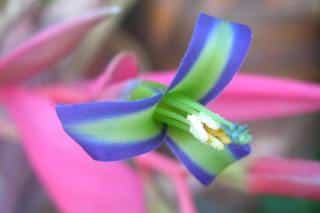

Billbergia is a plant often grown indoors in cooler climates that is simply beautiful.
Billbergia key facts
Name – Billbergia nutans
Family – Bromeliaceae
Type – indoor plant
Height – 12 to 16 inches (30 to 40 cm) indoors
Exposure – light but without direct light
Foliage – evergreen
Flowering – end of winter or summer
The name is a homage to Swedish botanist Gustav Johan Billberg. Native to South America, more specifically Brazil and Argentina, it’s grown for its leafage and superb blooming.
Billbergia is a plant that requires soil that is sufficiently rich and well-drained to grow well. Special Bromeliaceae soil mix seems to be the best solution for your Queen’s tears.
Upon repotting your Billbergia
If you plan to repot your billbergia and separate new shoots from the mother plant.
 Billbergia roots hate having too much water.
Billbergia roots hate having too much water.Billbergia requires temperatures that oscillate between 65 and 74°F (18 to 24°C) and never drop below 57°F (-13°C).
The temperature of a house or apartment is thus ideal for growing billbergia.
The best location for your billbergia is any spot where there isn’t any direct sun on the plant.
Regular but moderate watering is called for because Billbergia doesn’t usually require a lot of water.
In spring and summer
Keep the soil mix a bit moist and check that water drains properly.
Provide liquid leaf plant fertilizer more or less once a month to extend the blooming to the maximum.
To retain a certain moisture level, it is best to put the pot on a bed of clay pebbles wallowing in water.
In fall and winter
Reduce watering and wait for the soil to be thoroughly dry in the surface before watering again.
Stop adding fertilizer.
Most diseases targeted are the typical indoor plant diseases, red spider mite, scale insects, aphids and also powdery mildew.
A fabulous indoor plant, billbergia is native to tropical forests and is rendered vulnerable by the dry air in our homes.
Spraying the plant regularly and placing the pot atop a bed of wet gravel will help re-create the plant’s natural habitat.
Billbergia plants fear drafty spots.
Read also: